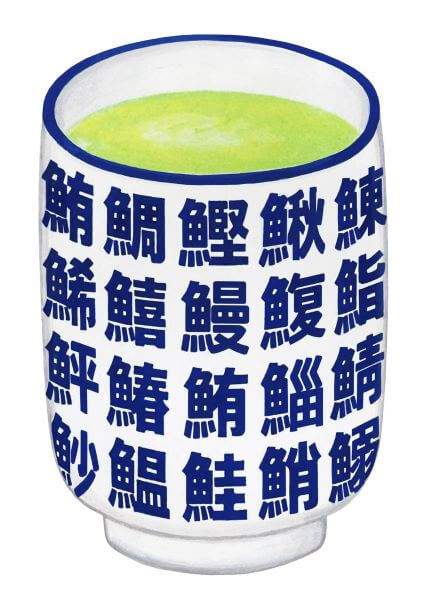
This practice’s origins can be found in the street stands leftover from before WWII. It was a natural remedy for the outdoor sushi vendors who set up street booths and needed a way to maintain heat in their drinks in order to make it through the cold. In addition to lack of convenient access to water, these stands were one-man operations and the time that serving tea takes away from his time making sushi were also contributing factors. In other words, the reason the teacups are large is natural wisdom of sushi shops from long ago.
Also, hot tea has the effect of dissolving the fat that remains on the tongue after eating a fatty sushi topping, cleansing and preparing the palette for the next piece of sushi. This is a task that cannot be performed by beer or Japanese sake.
Then, large teacups became one of the special features at sushi restaurants and a favorite feature among customers, so it wouldn’t make sense to go back to small teacups now. However, times change. There are now sushi restaurants that use relatively small teacups that they change with each refill in an attempt at a sort of stage effect. There are even places that have the teacups imprinted with the restaurant name, phone number, etc. and hand them out to favorite customers. This has tremendous advertising effects.
There are various production sites, but most that are mass-producing are located around the Toki area of Gifu prefecture and the more expensive but also relatively more durable tend to be Arita ware from Saga prefecture. There are wide varieties in shape and pattern, but despite the preference for large teacups at sushi restaurants, there is such a thing as cups that are too big and they are also harder to drink from. Also, thicker cups may be more durable, but they are also harder to drink from. Even when made thick, the rim should be thinner. The cylinder shape is hard to clean and the bottom of the cup tends to be stained by the tea. My personal opinion is that it is hard to find what I would call a refined teacup with a nice color and shape. But the worst is when a thin teacup or tea bowl gets too hot to hold.
Related contents:
GREEN TEA THAT PAIRS WITH SUSHI
[sc_apply url=”https://sushiuniversity.jp/apply/”]
We hope this information will be helpful.

Revision date: October 1, 2022
Share this article
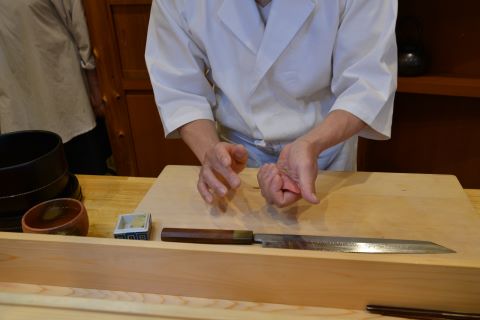
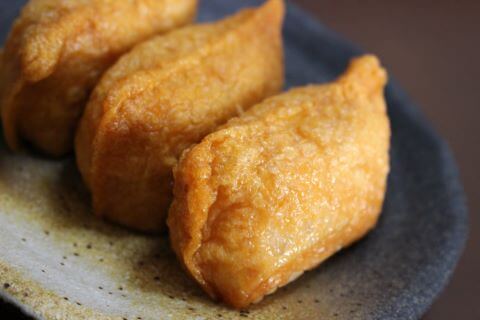
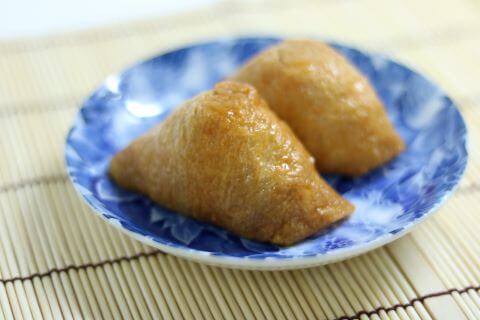
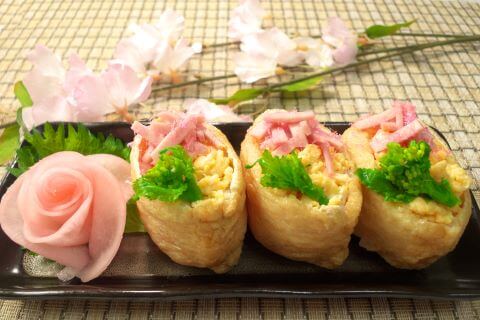
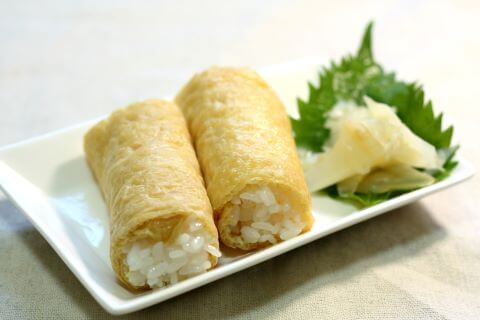 Almost all roll-type Inarizushi in Japan is made with a dried fried tofu from Kumamoto called Nankanage. Unlike normal fried tofu, it looks like paper in the shape of a sponge and does not form a bag. That’s why the only way to use it was by wrapping it around the rice. Also, this way of spreading out one sheet of boiled fried tofu and then wrapping the rice inside may have been created as a way to avoid tearing the fried tofu when stuffing with vinegared rice
Almost all roll-type Inarizushi in Japan is made with a dried fried tofu from Kumamoto called Nankanage. Unlike normal fried tofu, it looks like paper in the shape of a sponge and does not form a bag. That’s why the only way to use it was by wrapping it around the rice. Also, this way of spreading out one sheet of boiled fried tofu and then wrapping the rice inside may have been created as a way to avoid tearing the fried tofu when stuffing with vinegared rice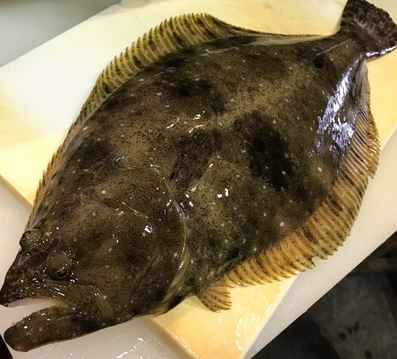 Hirame is a high-quality fish that goes for at least US $50 per kilogram. It can even exceed US $80 per kilogram, depending on the timing and the fish’s body.
Hirame is a high-quality fish that goes for at least US $50 per kilogram. It can even exceed US $80 per kilogram, depending on the timing and the fish’s body.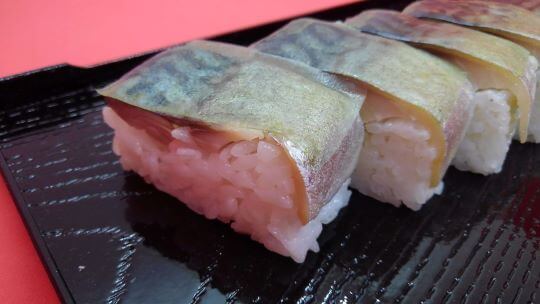 While not often seen in Tokyo, “Whole mackerel sushi” is popular in Kyoto and Osaka. This is pressed sushi made by placing vinegared
While not often seen in Tokyo, “Whole mackerel sushi” is popular in Kyoto and Osaka. This is pressed sushi made by placing vinegared 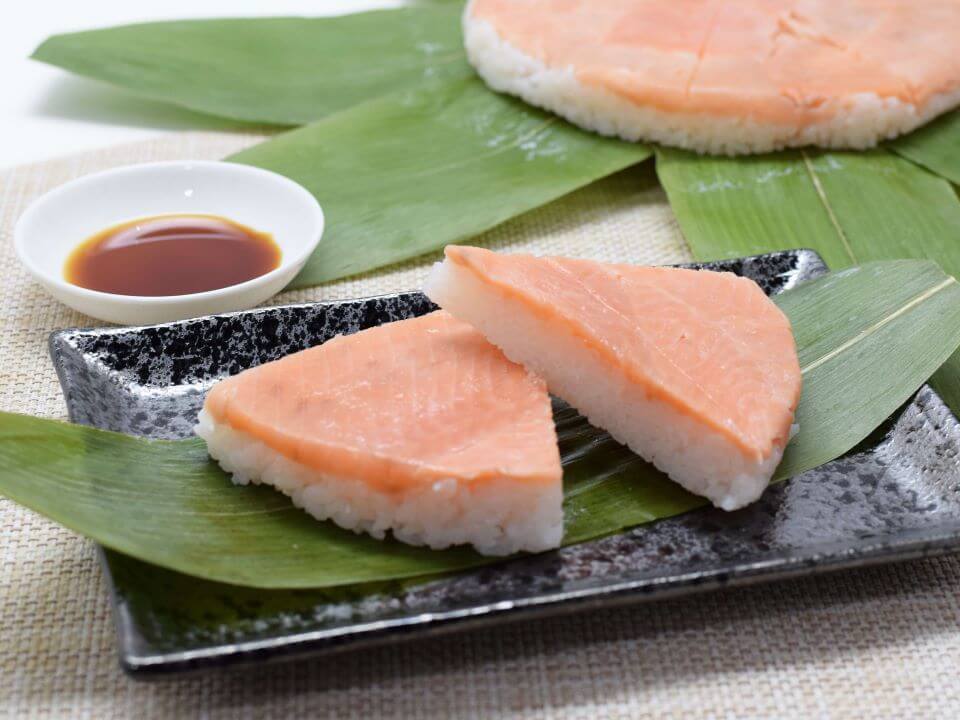 The origin of Masuzushi dates back about 300 years. Apparently, in 1717 it was first presented as Ayu narezushi (narezushi is a traditional food, said to be the original form of sushi and made from lactic fermentation of fish) to the third-generation feudal lord, Toshioki Maeda, by Shinpachi Yoshimura, a feudal retainer of Toyama who excelled in cooking skills. Toshioki liked the dish very much and assigned the role of vinegaring Ayu to Shinpachi. After that, it is said that the same narezushi was presented to the eighth shogun of the Tokugawa shogunate, Yoshimune Tokugawa, and that Yoshimune was extremely pleased with it.
The origin of Masuzushi dates back about 300 years. Apparently, in 1717 it was first presented as Ayu narezushi (narezushi is a traditional food, said to be the original form of sushi and made from lactic fermentation of fish) to the third-generation feudal lord, Toshioki Maeda, by Shinpachi Yoshimura, a feudal retainer of Toyama who excelled in cooking skills. Toshioki liked the dish very much and assigned the role of vinegaring Ayu to Shinpachi. After that, it is said that the same narezushi was presented to the eighth shogun of the Tokugawa shogunate, Yoshimune Tokugawa, and that Yoshimune was extremely pleased with it.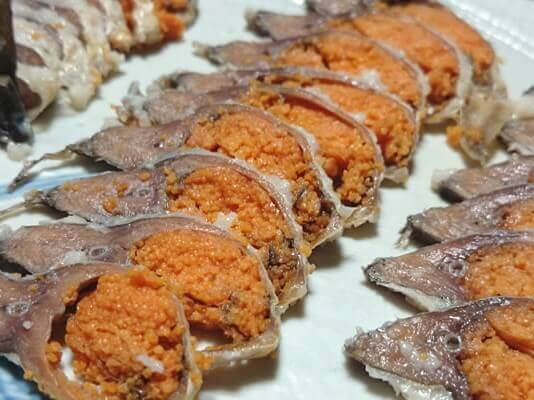 Narezushi (mainly a preserved food in which fish undergoes lactic fermentation with salt and rice), in which Sushi finds its roots, can still be found even today throughout Japan. The most famous is Funazushi (鮒寿司, 鮒鮓, 鮒寿し) in Shiga prefecture.
Narezushi (mainly a preserved food in which fish undergoes lactic fermentation with salt and rice), in which Sushi finds its roots, can still be found even today throughout Japan. The most famous is Funazushi (鮒寿司, 鮒鮓, 鮒寿し) in Shiga prefecture.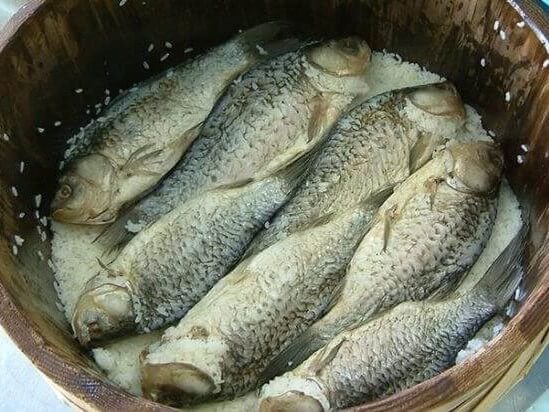 Making Funazushi sushi is surprisingly simple. The only ingredients are crucian carp caught in
Making Funazushi sushi is surprisingly simple. The only ingredients are crucian carp caught in 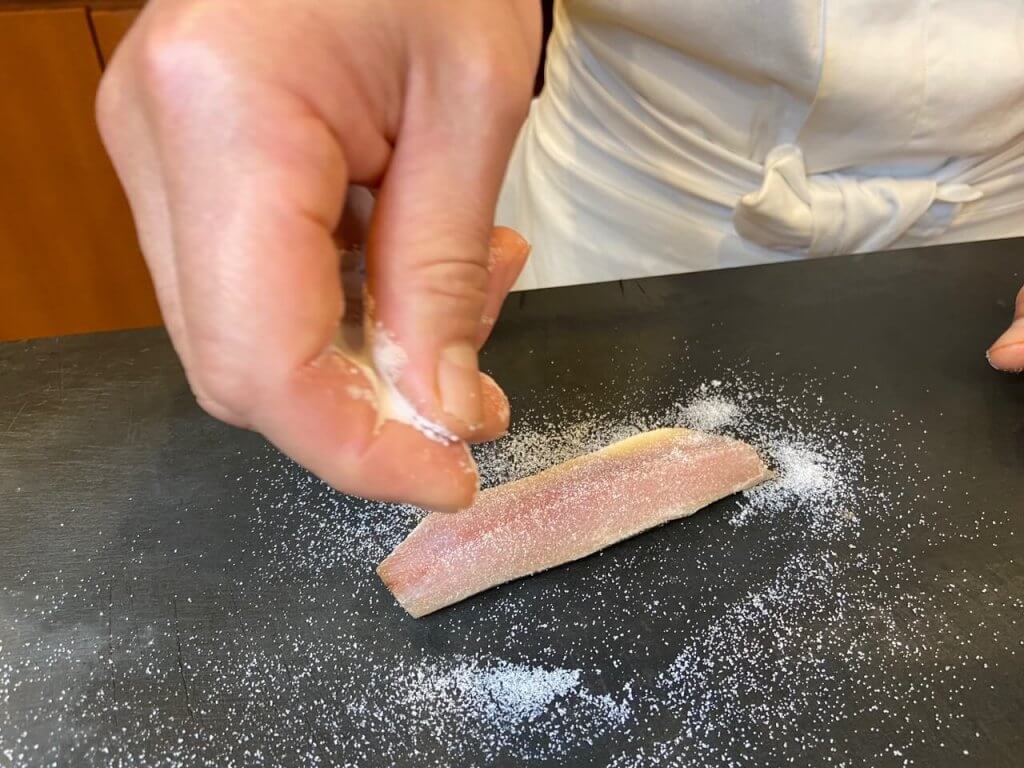
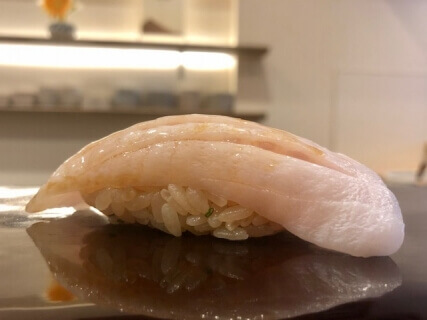
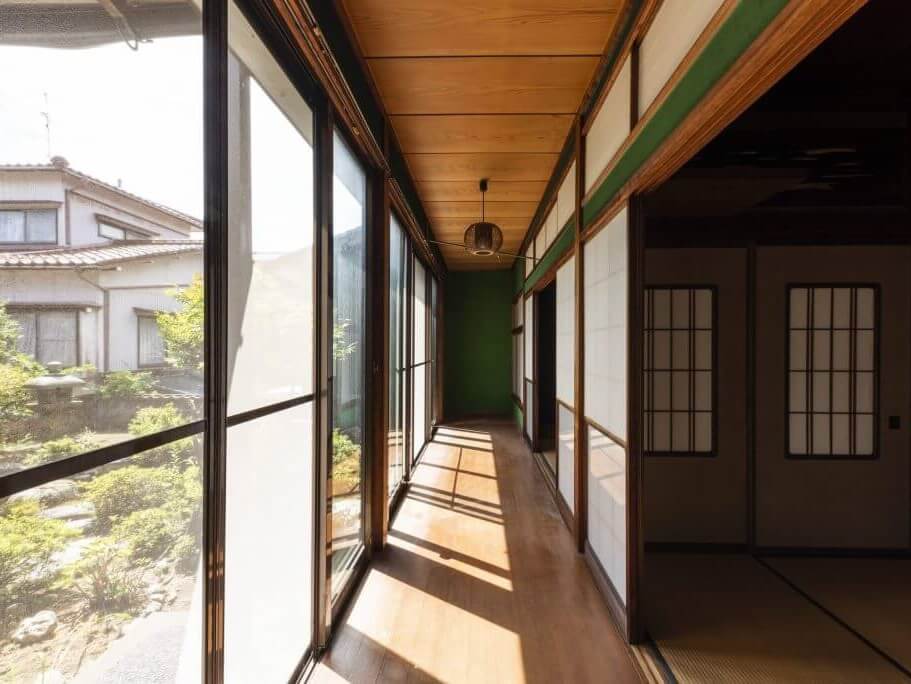 The name “engawa” comes from its resemblance to the unique veranda structure of Japanese-style homes. This veranda is called “engawa” in Japanese.
The name “engawa” comes from its resemblance to the unique veranda structure of Japanese-style homes. This veranda is called “engawa” in Japanese.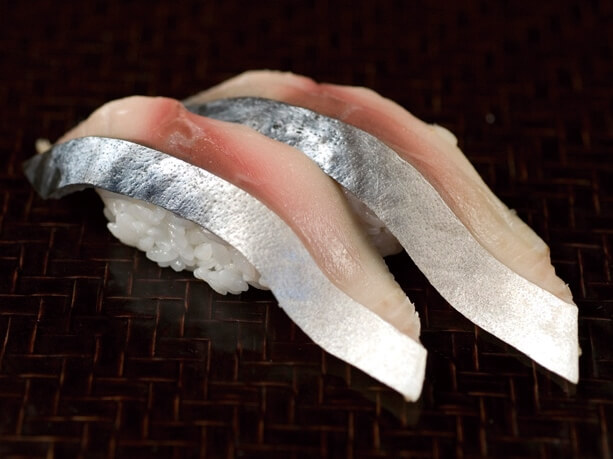 When you sit at the counter and order nigiri a la carte, they will come out in pairs.* There is nothing wrong with counting these in the regular Japanese way “ikko (一個),” “niko (二個).”
When you sit at the counter and order nigiri a la carte, they will come out in pairs.* There is nothing wrong with counting these in the regular Japanese way “ikko (一個),” “niko (二個).”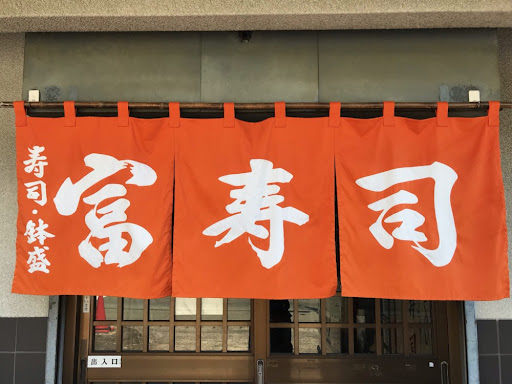
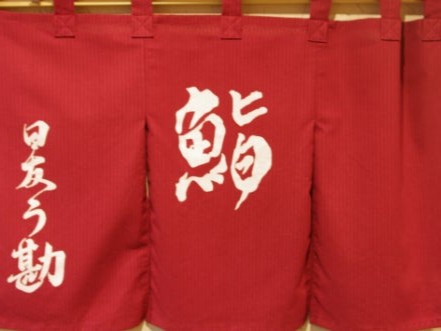
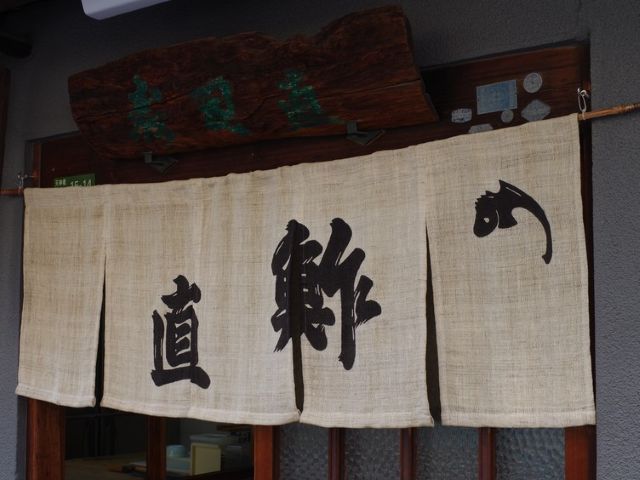
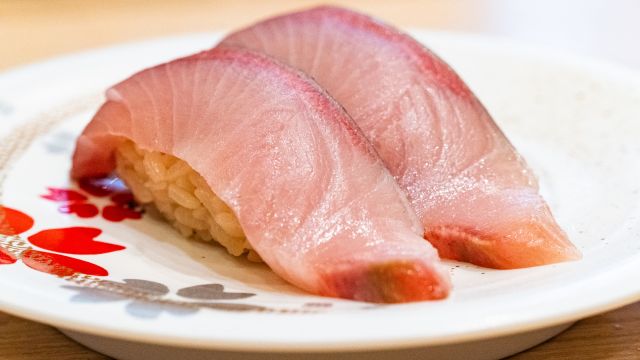
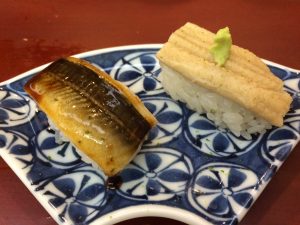
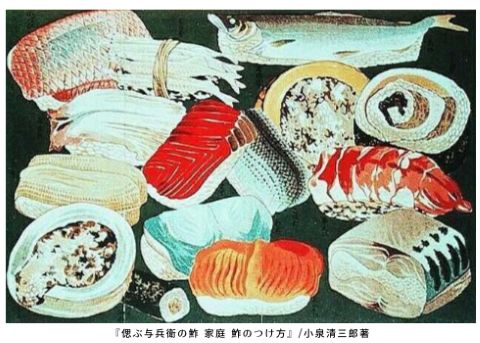
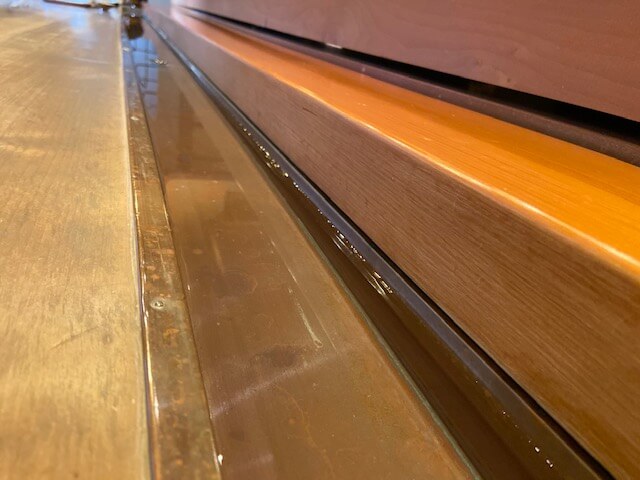
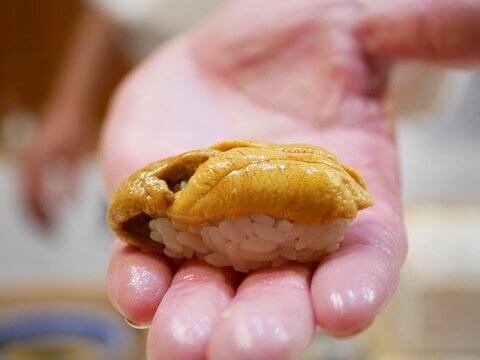
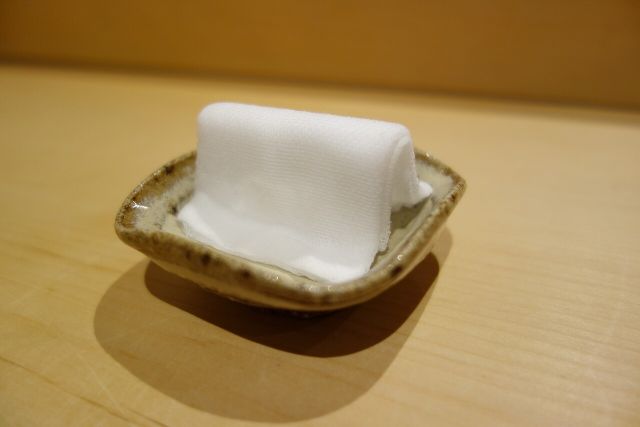
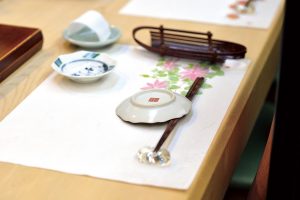 There are manners in using chopsticks that tourists may be unaware of. We would like to introduce some of those here.
There are manners in using chopsticks that tourists may be unaware of. We would like to introduce some of those here.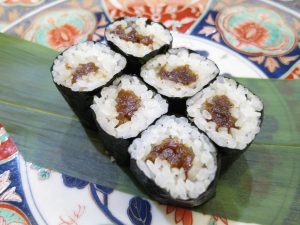 To maximize each flavor of toppings, have some pickled ginger or hot tea between different types of sushi to cleanse your palate. You don’t have to stick to the specific order, though. It seems like having customers eat freely is the idea held in common by most sushi chefs. However, indeed, you won’t be able to taste the next flavor after eating something rather sweet. Japanese conger (Anago), Egg (Tamagoyaki), and Kanpyoumaki should be eaten at the end.
To maximize each flavor of toppings, have some pickled ginger or hot tea between different types of sushi to cleanse your palate. You don’t have to stick to the specific order, though. It seems like having customers eat freely is the idea held in common by most sushi chefs. However, indeed, you won’t be able to taste the next flavor after eating something rather sweet. Japanese conger (Anago), Egg (Tamagoyaki), and Kanpyoumaki should be eaten at the end.